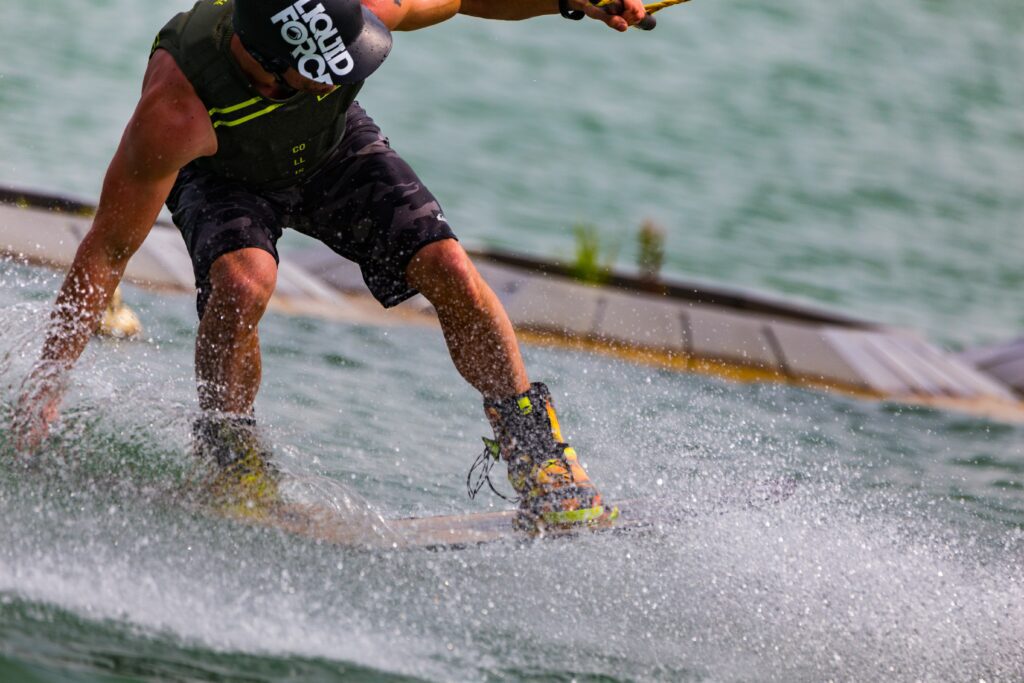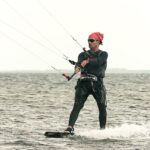
7 Tips for Appendices to Boost Your Wakeboarding Game.
Wakeboarding is a thrilling and adventurous water sport that has captured the attention of adrenaline junkies worldwide. It requires a certain level of physical fitness, balance, and skill to execute those stunning moves on the board while being towed by a boat. Wakeboarding can be challenging for beginners, but with proper guidance and practice, anyone can master the sport. In this article, we’ll share the seven essential tips for appendices to help you improve your wakeboarding skills and make the most of every ride.
Strengthen Your Core.
The core muscles play a vital role in wakeboarding, providing the foundation for balance and control. Therefore, focusing on exercises targeting your core, such as sit-ups, planks, and Russian twists, is essential. Building a solid body will improve your wakeboarding skills and help you prevent injuries.
Keep Your Arms Straight.
When wakeboarding, bending your arms to maintain balance or exert more control on the board is tempting. However, turning your arms can disrupt your balance and cause you to lose control. The key is to keep your arms straight and use your core muscles to steer the board.
Control Your Speed.
The speed at which you ride the board significantly impacts your wakeboarding experience. Starting slow and gradually increasing your speed will help you gain confidence and control over the board. However, it’s crucial to maintain a consistent pace that suits your skill level and the water conditions.
Look Ahead.
To maintain balance and stay in control, you must focus on the horizon rather than the board. Looking ahead helps you anticipate changes in the water conditions and adjust your movements accordingly. It’s also a great way to avoid getting distracted by the boat’s wake or other objects in the water.
Keep Your Knees Bent.
Bending your knees is one of the essential tips for appendices in wakeboarding. By keeping your knees slightly bent, you can absorb the impact of bumps and waves in the water, maintain your balance, and avoid falling off the board. Keep your weight centered over the board, and avoid leaning back or forward.
Practice Your Turns.
Turning is an essential skill in wakeboarding that requires practice and patience. Start with slight turns and gradually increase your speed and the angle of your turns as you gain confidence. Use your arms, core, and legs to make smooth, controlled turns without losing balance or speed.
Wear the Right Gear.
Wearing the right gear is crucial for safety and comfort in wakeboarding. Always wear a life jacket that fits you properly, a helmet, and appropriate clothing that won’t restrict your movement. Additionally, wearing gloves can help you maintain a better grip on the rope and prevent blisters.
FAQs:
Can I learn wakeboarding on my own?
A: While it’s possible to learn wakeboarding on your own, it’s always better to take lessons from a professional instructor. A skilled instructor can teach you the proper techniques and safety guidelines and help you progress faster.
Q: How can I overcome my fear of wakeboarding?
Fear is a common obstacle in wakeboarding, especially for beginners. The best way to overcome your fear to start with the basics and gradually build your confidence. Take lessons from a professional instructor who can guide you through the process and give tips for appendices to help you feel more comfortable on the board. It’s also essential to stay calm and focused and to remind yourself of the safety measures you’ve taken, such as wearing the right gear and riding in a safe area. With time and practice, your fear will diminish, and you’ll be able to enjoy wakeboarding to the fullest.
Author
Latest entries
 WatersportsMay 10, 2023Qatar GKA Freestyle Kite World Cup, Fuwairit Kite Beach, Qatar: 31 January – 04 February – 2023
WatersportsMay 10, 2023Qatar GKA Freestyle Kite World Cup, Fuwairit Kite Beach, Qatar: 31 January – 04 February – 2023 WatersportsMarch 30, 2023Seven Navigation Tips That All Kite Surfers Should Know.
WatersportsMarch 30, 2023Seven Navigation Tips That All Kite Surfers Should Know. WatersportsMarch 30, 2023Why Safety First is the Most Important Aspect of Kitesurfing.
WatersportsMarch 30, 2023Why Safety First is the Most Important Aspect of Kitesurfing. WatersportsMarch 30, 2023Tips to Improve Your Body Drag Skills in Kitesurfing.
WatersportsMarch 30, 2023Tips to Improve Your Body Drag Skills in Kitesurfing.
